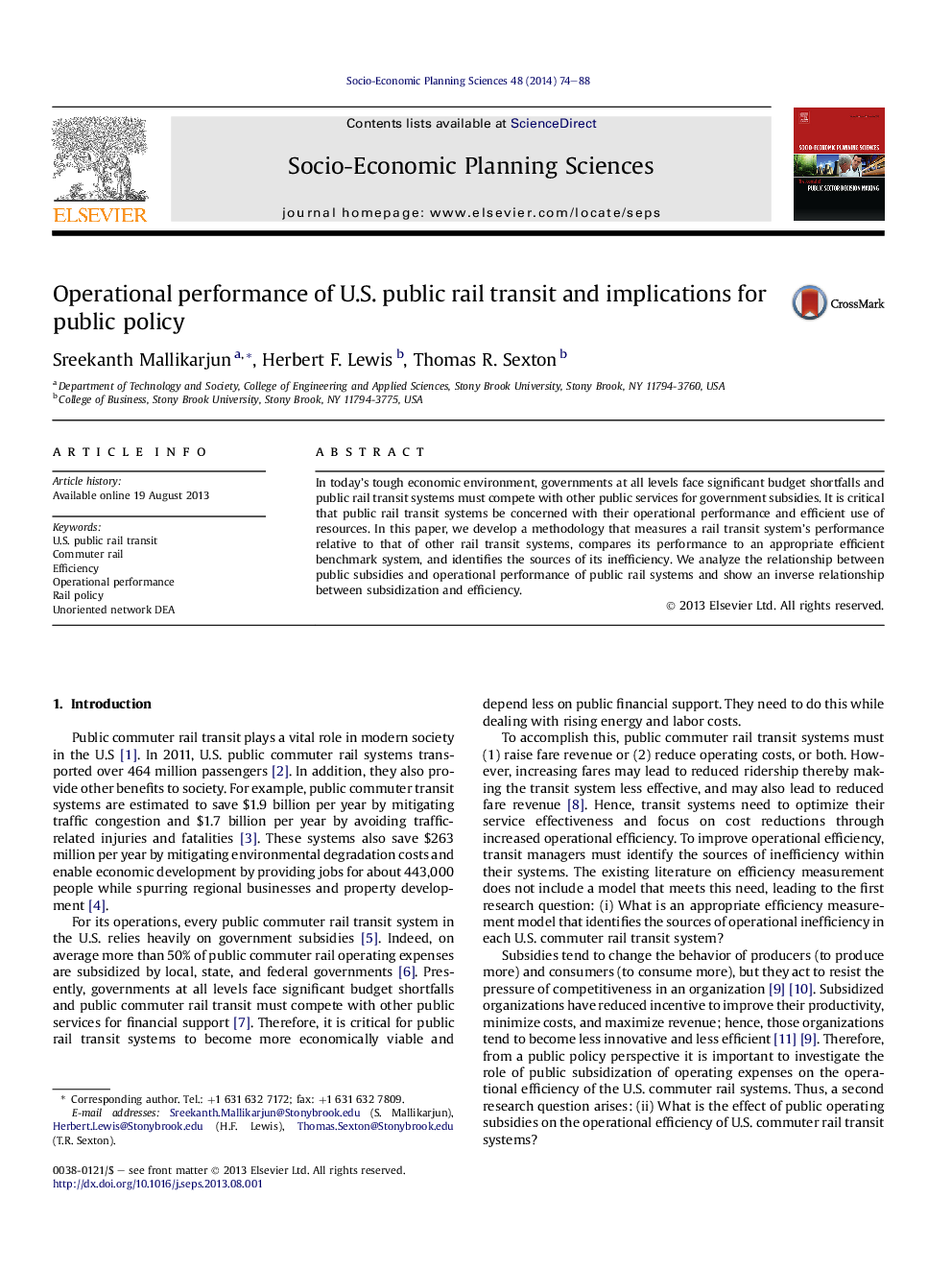| Article ID | Journal | Published Year | Pages | File Type |
|---|---|---|---|---|
| 987105 | Socio-Economic Planning Sciences | 2014 | 15 Pages |
•We present an unoriented network DEA methodology.•We measure the organizational efficiency of U.S. public rail systems.•The proposed model identifies the sources of inefficiency for each U.S. commuter rail system.•We estimate optimum levels of input, intermediate products, and output of each rail system.•We find an inverse relationship between organizational efficiency and percent subsidization.
In today's tough economic environment, governments at all levels face significant budget shortfalls and public rail transit systems must compete with other public services for government subsidies. It is critical that public rail transit systems be concerned with their operational performance and efficient use of resources. In this paper, we develop a methodology that measures a rail transit system's performance relative to that of other rail transit systems, compares its performance to an appropriate efficient benchmark system, and identifies the sources of its inefficiency. We analyze the relationship between public subsidies and operational performance of public rail systems and show an inverse relationship between subsidization and efficiency.
